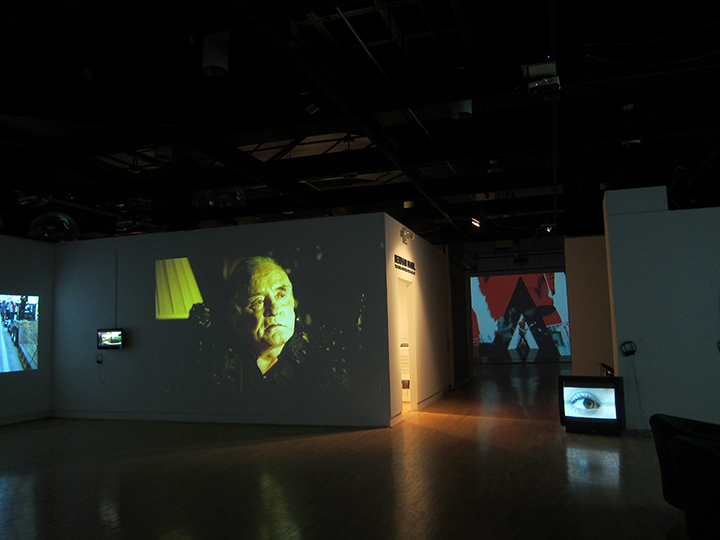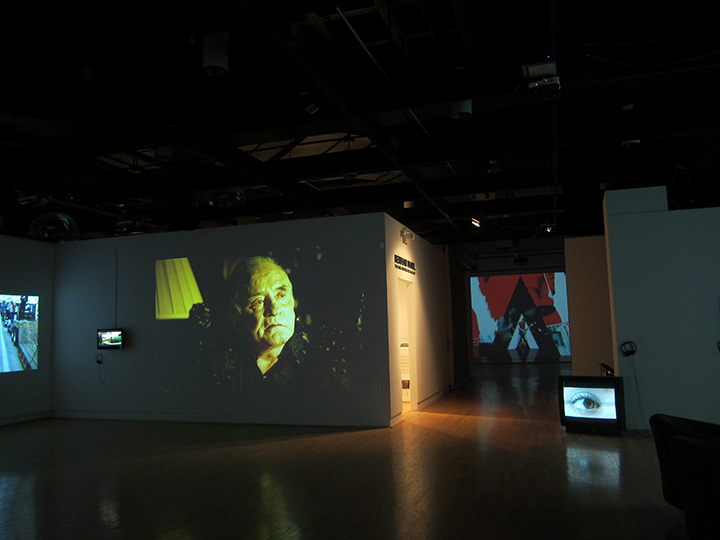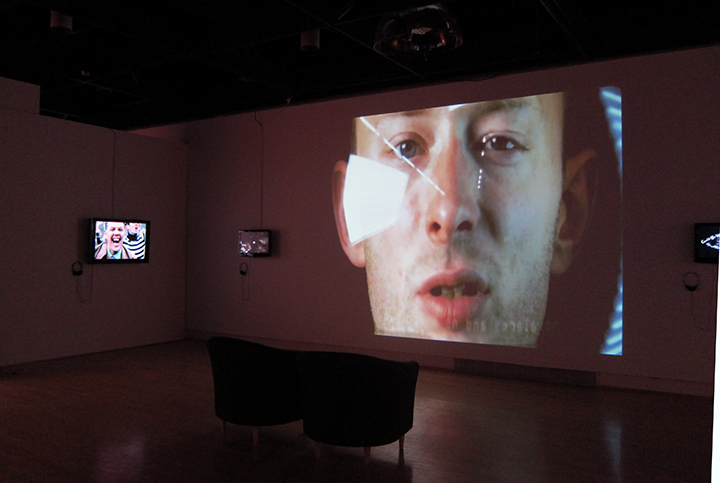The Art Gallery has played canvas to poetry and paintings, but this month its walls — bathed in moody lighting — tell the story of the music video.
The White Stripes’ “Seven Nation Army” fills the back room of the Art-Sociology building’s main gallery, its thumping theme and overlapping visuals drawing visitors in to the display. On another wall, a video cuts between scenes of an aging legend strumming his guitar and a dilapidated museum — it’s Johnny Cash’s “Hurt.”
“It never stops assaulting the senses, and to me that’s brilliant,” curator Quint Gregory said as he looked on at The White Stripes display.
“What It Is, What It Was: Music Video As Art,” which opened Nov. 6 and will close Dec. 14, presents 40 different music videos from the past three decades as works of art. Featured artists, their faces flashing from every corner of the gallery, include Radiohead, Kanye West and Fleet Foxes.
“This isn’t a normal art exhibition,” Gregory said. “This is trying to push the definition of art a bit.”
Six videos project onto the walls of the gallery, and visitors can stand under sound domes to listen to the music. The remainder play on flat-screen televisions or laptops stationed around the room, which visitors can listen to with headphones.
Four videos are also interactive — viewers can watch a compilation of fan art for “The Johnny Cash Project” or orchestrate the animation of Arcade Fire’s “Neon Bible” video. Visitors can even build objects into the digital landscape of the Danger Mouse and Norah Jones video “3 Dreams of Black.”
John Shipman, The Art Gallery’s director, was inspired to create the exhibition after he watched a particularly artistic music video with his wife seven years ago.
Three years later, Shipman invited Gregory — an Honors College lecturer and associate director of the Michelle Smith Collaboratory for Visual Culture — to be a co-curator for the exhibition.
The two men watched hundreds of videos, selecting those that “fused” together song and video and also “transcended to be more than the two parts.”
“Most people don’t think of music videos as art. We want to change that,” Gregory said. “They arrest you. They stop you in your tracks and keep your attention.”
Shipman said they originally wanted to showcase 49 videos, but it was difficult to obtain permission from certain record labels. While some companies demanded hundreds of dollars, some artists, like Tom Waits, were so enthusiastic about the exhibition they gave permission for the use of their videos for free.
“It’s very complicated because we’re working with the music industry, and that’s a challenge,” Shipman said. “But ultimately that worked out, and we have a great show.”
One of the videos — “Black Up” by Shabazz Palaces — came to the curators on the recommendation of senior studio art major Samuel Margai, who works in the gallery’s office. The video includes scenes of impoverished communities and tropical forests.
“When watching it, it’s like I’m on a hoverboard going 100 mph to different places around the world,” Margai said. “When I look at an abstract painting, this is what I want to see.”
He added that this gallery would especially appeal to the college crowd.
“This will engage a lot more students on campus, being something they can readily identify with,” he said.
The multimedia experience extends far beyond the exhibition, Shipman and Gregory said. Ultimately, they would like to see visitors share feedback and recommend new videos using social networks, such as using a video’s specific hashtag to tweet at @ArtGalleryUMD.
Shipman said the ideal visitor is anyone “with an open mind and a rock ‘n’ roll spirit.” But gallery attendant Emily Milanak, a junior Chinese and music major, said every student can enjoy the exhibit.
“Music is a big part of our lives and appeals to people our age,” Milanak said. “There are all different genres of music here, and there’s something for everyone.”
The Art Gallery is displaying music videos in its exhibit “What It Is, What It Was: Music Video As Art.” It presents 40 different music videos from the past three decades.





